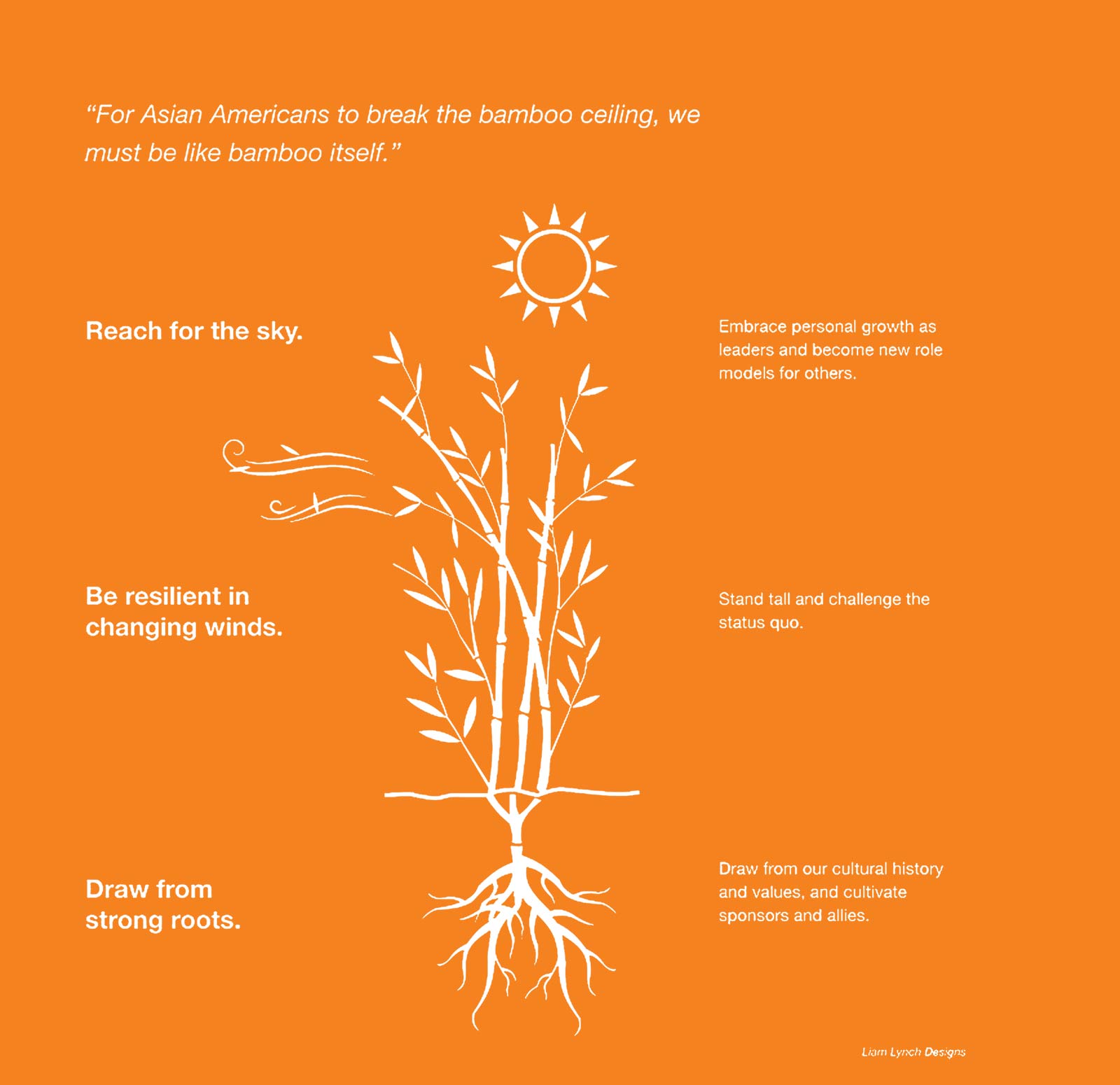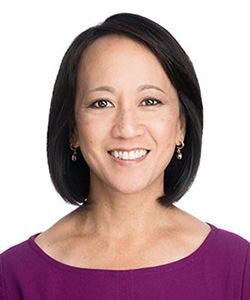By Alissa Hsu Lynch

It’s Time to Address the Asian American Leadership Gap is a thought-provoking perspective on how to break the “bamboo ceiling” in corporate America as an Asian American Pacific Islander (AAPI). Hsu Lynch shares her personal experience and concrete advice on how AAPI’s can fight against bias and stereotypes, build relationships with power brokers, and stay true to their cultural heritage – improving the leadership equity gap in Fortune 1000 companies.
When actress Michelle Yeoh made history in 2023 by becoming the first Asian to win an Academy Award for Best Actress, she boldly proclaimed, “For all the little boys and girls who look like me watching tonight, this is a beacon of hope and possibilities. This is proof that, dream big, and dreams do come true.” Her rallying cry resonates for every Asian woman with dreams of fulfilling her career aspirations and especially for Asian women in the corporate world. It’s a good reminder that having more Asians in positions of power can inspire others to achieve the same.
Numerous studies demonstrate that companies with more diverse leadership teams deliver better business results. Yet despite gains over the past decade, Asian Americans represent only 3% of executives, even though they are well represented as middle and senior managers. Progress in the corporate boardroom has also been slow, with Asian and Pacific Islanders (AAPIs) comprising only 4% of Fortune 1000 board members, with Asian women at a minuscule 1.5%.
Asian Americans are the fastest growing demographic in the United States and make up 13% of the professional workforce. So why aren’t more Asians – particularly Asian women – reaching the highest levels at the largest companies in America?
The reality is the so-called “bamboo ceiling” persists for AAPI leaders, and we still have biases to overcome and ceilings to break to achieve equity in the top levels of leadership. Let’s look at some of the barriers holding AAPI leaders back and suggestions for overcoming them.
Barrier #1: The invisible minority stereotype
The Model Minority Myth stereotype that all Asians are smart, hardworking, and nice is a double-edged sword that carries the unspoken implication that Asians are also weak, passive, and are “the invisible minority.” When I was a mid-level manager, I completed a 360-degree feedback program that opened my eyes to blind spots I had as a leader. Some of the feedback included that I was “all business” and that my team didn’t feel like they knew me. This surprised me because I was taught by my Chinese parents that hard work pays off and this had always served me well before. I needed to dispel the Model Minority Myth for myself.
Solution: Embrace being seen
I was fortunate to have mentors and coaching support from my company, and I realized that leading teams requires more than having a strong work ethic. I learned that sharing more parts of myself–including that I was a professional dancer prior to my business career, and that I was a mom of two kids trying to find the right balance between work and family–would help me become a more effective and authentic leader. Importantly, I adopted both the strong cultural values instilled by my parents and my own voice and story to better connect with others.
Whether you aspire to become a senior executive or serve as a corporate board director, it’s important to understand and define your unique value proposition. “We each have diverse experiences, capabilities, and perspectives that we bring to the table. While the Asian cultural norm is to be humble, we need to get comfortable with creating more visibility so that we can be considered for advancement. Developing a thought leadership strategy is a good way to amplify your presence and help you communicate your value proposition through multiple channels.

Barrier #2: Lack of role models
Seeing is believing, and having more Asians in leadership roles can inspire others to achieve the same. During my career, I did an international assignment in China. Unlike in the United States, there were many more role models in the Asia Pacific region–strong, successful Asians in executive roles, who each had a different leadership style, background, and path to success. However, in the U.S., there are too few role models when only 3 of the S&P 500 company CEOs today are Asian women–AMD’s Lisa Su, Arista Networks’ Jayshree Ullal, and Vertex Pharmaceutical’s Reshma Kewalramani. AAPIs–especially young, Asian American women–are among the least likely racial groups to feel that they belong and are accepted in the U.S., including in the workplace. Over half say this is due in part to not seeing others like themselves in positions of power.
Solution: Activate your network and sponsorship
Because AAPI leaders may not have as many natural connections as other groups, we need to be intentional about building our networks. Start by tapping into your personal and professional networks to identify leaders in the roles you seek and reach out to get their advice and to let them know what your career goals are. To obtain a board seat, especially – where the majority of open board seats are filled by word of mouth through the personal networks of CEOs, board members, investors, and search firms – it’s even more critical to activate and grow your network.
In addition, cultivating sponsors is important. I would not have achieved the career success I’ve enjoyed without having sponsors who advocated for me. I’m grateful to the senior leaders and board members who acted as champions in selecting me for opportunities and speaking up for me when I wasn’t in “the room where it happens.” Attaining more sponsorship for Asian Americans is an important strategy to help address the equity gap.
Barrier #3: Systemic Bias
In the workplace, AAPIs are least likely to become executives, with white professionals twice as likely to be promoted to management. Systemic bias persists, with over one-third of Americans (37%) believing that racism and discrimination against Asian Americans are key factors preventing their promotion to senior corporate positions. The underrepresentation is even more stark in the boardroom. Alarmingly, 67% of Fortune 500 boards have no Asian directors. No doubt corporate boards need to look beyond the C-suite to identify candidates and fill their pipeline with qualified Asian directors, but the reality still emphasizes C-Suite experience for board recruitment. This creates a larger barrier to entry for AAPIs compared with their peers. The lack of diversity in executive roles perpetuates systemic biases and stalls efforts to bridge the equity gap.
Solution: Challenge the status quo
To address this systemic bias, society as a whole, especially in corporate America, must adopt a proactive and collaborative approach. Companies, boards, and recruiters need to reshape their thinking and challenge the status quo. It’s time to redefine what it means to be “qualified” for leadership roles, by breaking free from the constraints of traditional C-Suite requirements and welcoming new perspectives to the boardroom. Broadening the definition of relevant leadership experience can lead to the inclusion of diverse, qualified AAPI candidates. Furthermore, focused leadership development programs and sponsorship can help accelerate advancement of AAPI individuals into executive positions and board roles. By fostering an ecosystem that values diversity and inclusivity, we can start to dismantle systemic bias and ensure equitable representation of AAPIs at all leadership levels.
It’s our time
The value of diversity in the C-suite and corporate boardrooms can no longer be disputed. Improving equity unlocks a powerful opportunity for corporations to better understand and reflect the world’s evolving cultural landscape, accelerate innovation and investment to grow market share among the fastest-growing consumer group in the U.S., and create new role models for the generations to follow.
For Asian American professionals to break the bamboo ceiling, we must be like bamboo itself.
Michelle Yeoh closed her Oscar speech thanking her family and all the people who “let me stand on your shoulders, giving me a leg up so that I can be here today.” To achieve equity for Asian Americans in the top corporations in America, we must work together to create opportunities for AAPI leaders and manifest the change we wish to see in the world.

Alissa Hsu Lynch
Alissa Hsu Lynch is a board member, Entrepreneur-in-Residence at DigitalDx Ventures, and a former executive at Google and Johnson & Johnson.






